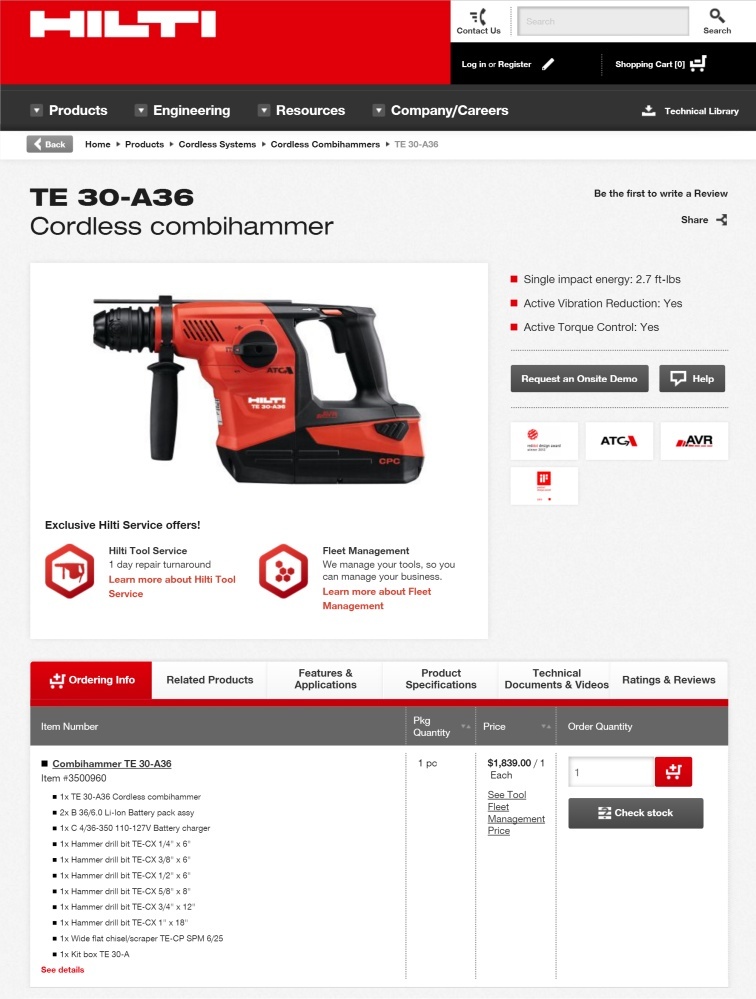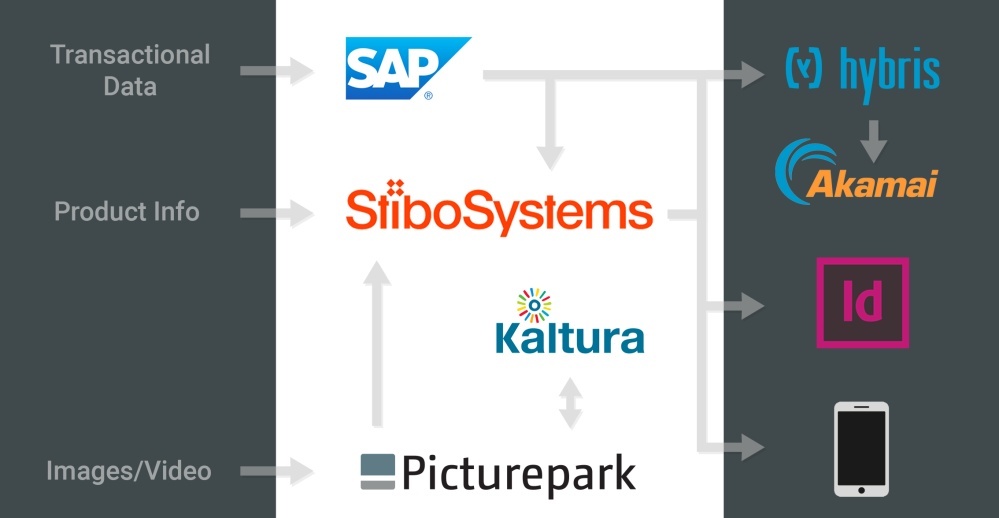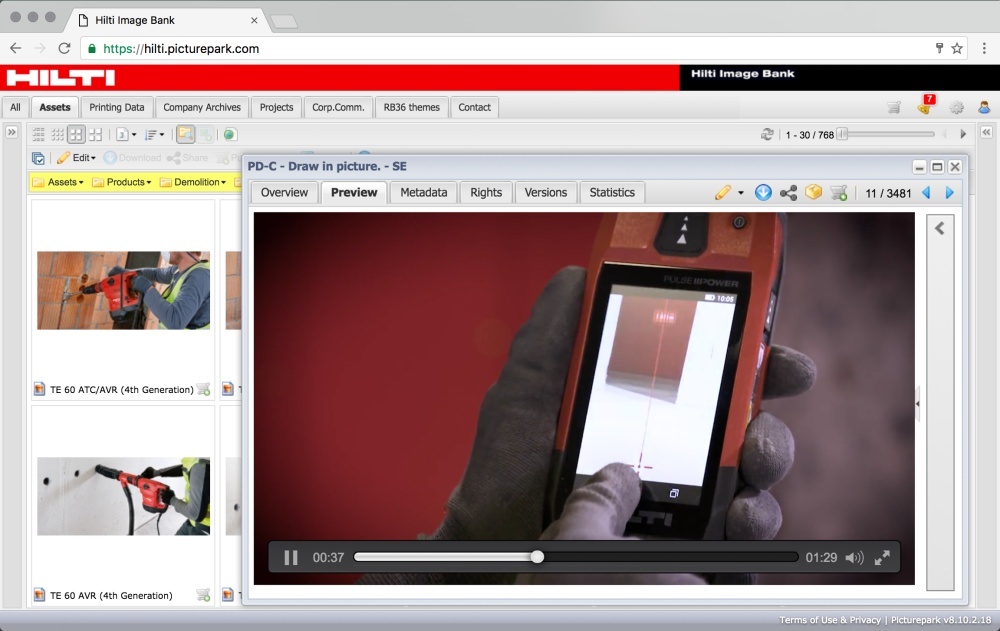Hilti is a global brand that manages product information for more than 10,000 items, in more than 40 languages. Using a suite of networked business systems, the company creates, manages, approves and distributes its product information, without duplication of effort, and with confidence that its global partners, websites, mobile apps and printed materials always provide accurate and current information.
The Need for a Master Data Source
Master Data Management describes the process through which an organization ensures its important data is managed in such a way that there is a “single source of truth” that humans and connected systems can rely upon to be available, accurate and complete.
Ambiguity in authority leads to confusion. When it isn’t clear to a child to which parent he or she must go to for a specific permission, he or she will choose the parent most likely to grant that permission. When a retail partner doesn’t know where to go for product information, it will download the information from the most convenient source, whether or not that source is official or provides most recent version of the information.
To combat this, organizations define an authority source they consider to be “the truth” with regard to any given piece of information.
In some cases, the authority source for all information might be a single system or person. This is more common at smaller companies where the CEO or other manager might be the “go to” person for all decisions, or whose CRM might be the only shared business system in use.
At larger organizations, it is less practical for a single system or person to act as a global authority or source. The CEOs of the world’s largest companies, for example, couldn’t likely recite all product numbers, the names of all partners, or whether a travel case comes with product #2144-C.
Corporate master data and product information management teams have built multi-system networks that enable their companies to manage corporate data in ways that are efficient and reliable, and that make their data accessible to systems and people who need it.
Hilti develops and manufactures systems and services that feature leading-edge technology and provide the construction and energy sectors with outstanding added value. It employs more than 23,000 people, and has a product catalog of more than 10,000 items that it makes available across 120 countries.
The company’s product information is published in more than 40 languages, so it is easy to imagine why Hilti’s product information must be carefully managed. Departments, such as Marketing, Development, Quality, Legal and Sales, each need access to the data, and each has a different interest in the data. Further, each department has a different authority with regard to what the data says or how it is presented. What seems like a perfect campaign piece to Marketing might be considered a potential liability by Legal, so it is important that all constituents have shared access to all related data during the approval process.
Hilti has built a network of business systems that provide product information to Hilti employees, customers and partners, media professionals and the public. And though multiple systems are in use, the net result is a single, unified “source of truth” for all product data.

Though presented to the Web visitor as a single page, the content on this page originates from SAP (item number and pricing), Stibo Systems STEP (product details) and Picturepark (product image and videos).
The Hilti Product Information Ecosystem
The systems collectively used for product information management at Hilti are described below.
SAP Enterprise Resource Planning (ERP)
SAP delivers product data, such as the unique item number, product naming or the packaging content, to Stibo Systems STEP. Transactional data required for online shopping, such as prices and inventories, are delivered directly to the Hybris-based “Hilti Online” website.
Stibo Systems STEP Product Information Management (PIM)
STEP is used by Hilti product managers as the master database for sales-related product data, such as product specifications, benefits lists, application descriptions, images, videos; and documents, such approvals, certificates and technical reports. STEP receives images and video links from Picturepark, which it sends, along with product textual data, to InDesign (print), Hybris (website) and mobile app development.
Picturepark Digital Asset Management (DAM)
Picturepark serves as the master database for Hilti’s product images and videos. Images selected by Picturepark content editors are sent via integration to STEP, where they become available to product managers. Likewise, Picturepark sends selected videos to Kaltura, which returns streaming links to the videos that Picturepark sends to STEP. Product managers can preview the videos and choose those they want used with the product information.
Adobe InDesign
Adobe InDesign is used to produce template-based printed materials. The product information used by the templates comes from STEP. The images originate from Picturepark.
Kaltura Video Publishing Platform
Kaltura is used to serve streaming video to the company’s websites and mobile apps. Kaltura receives videos from Picturepark and generates links to those videos that it hands back to Picturepark. Picturepark delivers those links to STEP, from where they are previewed and selected by Hilti product managers.
Hybris e-Commerce System
Hybris serves as the company’s e-commerce platform. STEP provides Hybris with product info, images and video links that have been chosen by product managers.
Akamai Content Distribution Network (CDN)
The Akamai content distribution network ensures Hilti websites are fast worldwide by caching content for playback from regional Web servers.
PIM at the Center
One of the key benefits of centering this data flow around Hilti’s Product Information Management (PIM) system, STEP, is that it enables the company’s many product managers to have direct control over how their respective products are presented.
This is valuable because product managers are the experts on their respective products. By giving them hands-on access to the PIM system, they can personally ensure the data is accurate, and the images and videos chosen to represent and explain their products are appropriate. Contrast this to workflows in which brand specialists create product copy and website editors choose images and video: When published information is incomplete or wrong, the customer experience suffers.

Hilti’s product information data flow starts with input into SAP, Stibo Systems STEP and Picturepark. From those points, data is routed and eventually published via print, website and mobile apps.
Unique Product Data Masters
Important to note about Hilti’s infrastructure is that there is no redundancy or ambiguity with regard to data sourcing— product data of a given type is always entered using one system only. The master systems (SAP, STEP, Picturepark) each feed data to other systems (Kaltura, Adobe InDesign, Hybris, Akamai).
The information provided to the “downstream” systems is read-only to the users of those systems. For example, the product numbers that flow from SAP to STEP cannot be edited in STEP. Likewise, the video playback links that Picturepark provides to STEP cannot be edited in STEP.
A side benefit of this data flow is that the users of a given type of data need access only to the system that serves as the master for that data. For example, photo editors who work in Picturepark don’t need access to SAP or STEP. Likewise, product managers who work in STEP, don’t need access to Picturepark or Kaltura.
Though it would be possible to create integrations that provide bidirectional synchronization of data, this would defeat the purpose of having unique master data sources.
Workflows to Ensure Quality and Governance
Just as each new Hilti product undergoes rigorous physical testing to ensure it lives up to the company’s reputation, the virtual versions of each product—their descriptive data—undergo similar scrutiny before becoming available publicly.
Among the departments involved in the creation and approval of each new product information dataset are:
- Product Data Management
- Marketing (Product Management)
- Development
- Quality
- Brand
- Legal
First off, before a product becomes a product, it becomes a Material Master record in Hilti’s global SAP system, which the company’s Head of PPM Data Management, Steffen Dohm, describes as one of the world’s largest installations. This is where the product item number and bill of material are assigned.
A product record is then created in STEP, where sales-related information is added. This data includes textual content, such as marketing copy, application descriptions and technical specifications, plus complete documents, such as approvals, certificates and test reports.
Product data is initially entered and managed in English, though it will be localized into more than 40 different languages, once it has been approved.
Also added in STEP are the images and videos that will represent the product on Hilti websites and mobile apps. Although the images and video come from Picturepark, the integration between Picturepark and STEP is transparent to STEP users.
With the product record complete, a STEP workflow is launched.
The first step is to secure the approval of the product manager. Next, the Quality department of the owner business unit checks the technical data for completeness and accuracy. The Brand department then checks to ensure the original English text is well written. Finally, Hilti’s Legal department in the United States checks to make sure the content poses no undue liability concerns. Hilti considers US law to be most strict with regard to liability, so it uses that as a global measure for all content.
Assuming the content passes the scrutiny of the US Legal team, it is made available to Hilti’s local marketing teams for consideration.
Dohm explained some complexities of localizing Hilti product data.
“Localizations are approved for regional fluency,” he said. “Though a localizer might use a given word that is technically accurate, a regional manager might decide that a synonym of that word would be more effective for the local market. For this reason, our localization workflows move in two directions.”
Manufacturers who have worked with external location services understand this phenomenon. There are certain ways of saying things in a given industry and region so that customers will be able to relate to the content. This is the difference between “translation” and “localization.” Translated text might be readable by a speaker of that language, but only localized text feels natural.
The local teams start by using STEP to select the product lines they want to sell. This triggers an external translation process for the languages of the local region.
Once translated, the content is sent back to the Hilti local team for approval. At this stage, they can make adjustments, such as choosing synonyms for words that aren’t quite right, to make the content better fit Hilti’s brand and use cases.
The adjusted content is sent back to the external localizer for approval. Once approved by both sides, the content is sent back into STEP, where it becomes the official product information for that region.
Now, with a better understanding of the Hilti product information management workflow, one can imagine why managing product data for 10,000+ products across more than 40 languages requires clear definition of policy, careful adherence to procedure, and absolute execution consistency.

Hilti image and video editors upload content into Picturepark, which serves as a central hub and master database for the company’s non-textual product data. Picturepark pushes selected content to Kaltura and STEP, from where it is accessed for website, print and mobile app use.
Multi-channel Content Publishing
Hilti’s product data is used across multiple channels, including:
- Website / e-commerce
- Printed materials
- Mobile apps
If the company didn’t adhere to such a strict “single source of truth” data management philosophy, the information on the website might differ from that used in print or within the company’s multiple mobile apps.
Hilti’s workflows and underlying systems help the company ensure that, no matter what country, language or product, the information seen by the public has been scrutinized and approved for use in that market.
This content was authored and published by Picturepark, with the cooperation and permission of Hilti. Thanks to Hilti’s Steffen Dohm and Harald Prantner for their assistance.
Systems mentioned in this article:
- SAP: http://go.sap.com
- Stibo Systems STEP: http://www.stibosystems.com
- Picturepark DAM: https://picturepark.com
- Kaltura: http://corp.kaltura.com
- Adobe InDesign: http://adobe.com
- Hybris e-commerce: http://www.hybris.com
- Akamai CDN: https://www.akamai.com